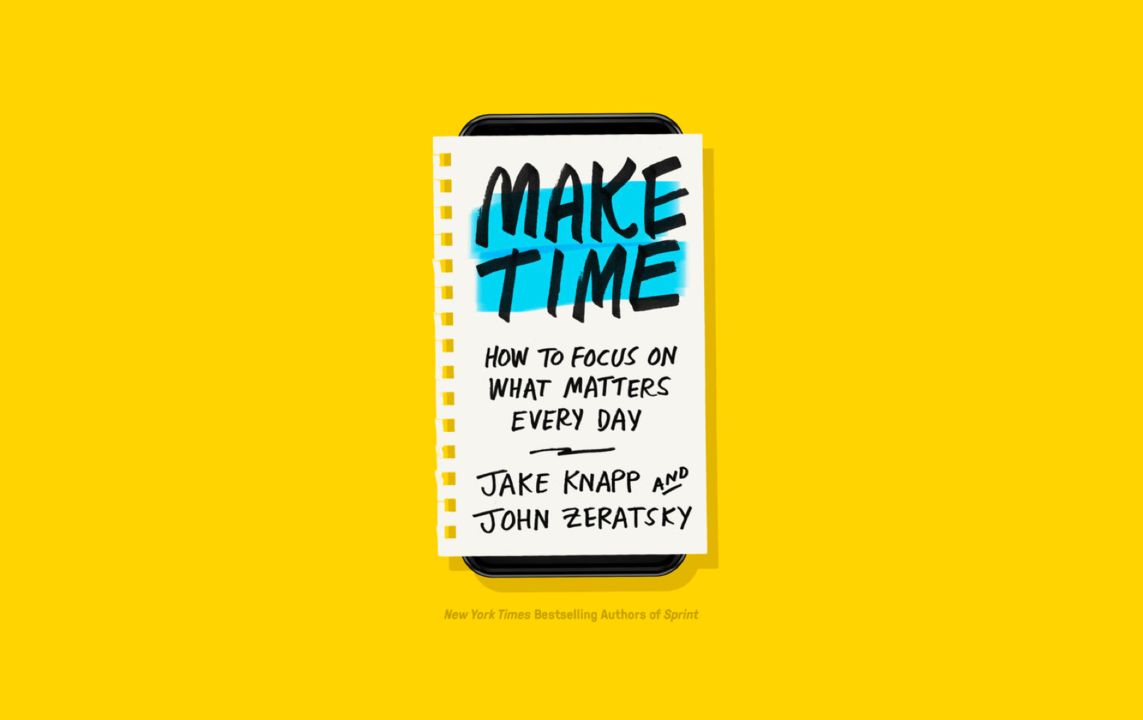Book Summary: Make Time
Key Points and Lessons from Make Time by Jake Knapp and John Zeratsky

Make Time offers a practical framework for reclaiming focus and energy in a world full of endless distractions. Drawing from personal experiments and examples, the authors provide actionable strategies for designing your day around what truly matters. Below is a summary of the key lessons and concepts from the book, organized with subheadings and reflective of the blog’s tone of personal exploration.
1. The Four-Step Framework
The authors introduce a simple framework for building focus and intentionality into your day:
- Highlight: Choose one key priority or “highlight” for the day—something that will make your day feel worthwhile.
- Laser: Minimize distractions and focus on your highlight.
- Energize: Take care of your body and mind to maintain energy throughout the day.
- Reflect: Assess what worked and what didn’t to refine your approach.
This framework is not about rigid scheduling but about experimenting to find what works for you.
2. Choosing a Daily Highlight
The concept of a “daily highlight” is at the heart of Make Time. Instead of being reactive, the authors encourage identifying one task, activity, or moment to prioritize.
Key Lessons:
- Pick What Matters Most: Your highlight can be a work task, a personal goal, or even spending time with loved ones. For example, the authors highlight a busy dad who chooses playing with his kids as his daily highlight to stay connected with what matters most.
- Use Three Criteria to Choose: Highlights can be based on urgency, satisfaction, or joy. You don’t have to justify your choice; what matters is that it feels meaningful.
- Example: John shares how he chose a highlight like finishing a writing task during his vacation, ensuring he felt productive while still enjoying downtime.
3. Creating Laser Focus
To focus on your highlight, the authors recommend eliminating distractions and creating an environment that supports deep work.
Key Lessons:
- Design Your Phone Use: The authors suggest turning off notifications, using grayscale mode, or even leaving your phone in another room to avoid constant distractions.
- The Infinity Pool Problem: Platforms like social media, news apps, and streaming services are described as “infinity pools” with endless content. Knapp and Zeratsky encourage setting boundaries, like logging out of accounts or deleting apps temporarily.
- Example: Jake shares how he avoided checking his email until after completing his highlight, which allowed him to maintain focus during his most productive hours.
4. Energizing Yourself
Maintaining energy is crucial to staying focused and present. The authors advocate simple strategies to boost physical and mental well-being.
Key Lessons:
- Move Your Body: Incorporate movement throughout the day, whether it’s a walk, stretching, or a quick workout.
- Eat Real Food: Avoid energy crashes by focusing on whole foods and minimizing processed snacks.
- Prioritize Sleep: One of the most emphasized lessons is the power of good sleep. Examples include Jake’s experiment with avoiding screens before bed and setting a consistent bedtime.
- Example: John shares how drinking water and going for a walk during a work break helped him reset his energy and refocus on his highlight.
5. Reflecting and Iterating
Reflection is an often-overlooked part of building habits. The authors recommend taking a few minutes at the end of the day to evaluate what worked and what didn’t.
Key Lessons:
- Track What Matters: Keep a simple log of your highlights, distractions, and energy levels to spot patterns.
- Experiment with Adjustments: Treat every day as an experiment. If something doesn’t work, tweak it. For example, the authors describe how they adjusted their highlights and focus strategies based on their reflections.
6. Strategies for Success
Throughout the book, the authors provide specific tactics for implementing the framework in daily life.
Examples:
- Time-Blocking for Highlights: Set aside specific times for your highlight to ensure it doesn’t get buried in busywork.
- Avoiding Default Settings: Be intentional about how you spend time instead of defaulting to autopilot routines like endless scrolling.
- Batching Tasks: Group similar tasks like emails or admin work to free up larger blocks of uninterrupted time.
- “Just One More Thing” Rule: Resist the urge to squeeze in one more task before transitioning to something important, like your highlight.
Final Thoughts: Lessons from Make Time
The overarching message of Make Time is that productivity isn’t about doing more—it’s about doing what matters most. By focusing on a daily highlight, eliminating distractions, and maintaining energy, you can design days that feel intentional and fulfilling.
This isn’t a one-size-fits-all approach. The authors encourage experimentation and reflection to adapt the framework to your unique circumstances. Their examples remind us that small changes, practiced consistently, can lead to meaningful progress. As the authors put it, “You don’t have to change everything to change something.”




